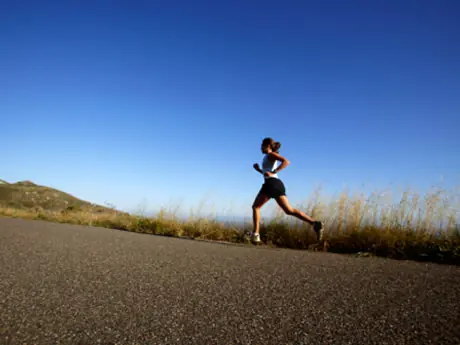
Probably the biggest difference between me and America's fastest marathoner, Ryan Hall, (besides my charming good looks) is the size of our hearts. The amount of blood the heart pumps with each contraction of its left ventricle—the heart's largest chamber that is responsible for sending blood to every part of your body except the lungs—is called the stroke volume. Multiply the stroke volume by your heart rate, and you get the amount of blood pumped by your heart each minute, called the cardiac output. The larger your left ventricle, the more blood it can hold; the more blood it can hold, the more blood it can pump.
So characteristic is a large heart of genetically gifted and highly trained runners that it is considered a physiological condition by the scientific and medical communities called Athlete's Heart. While you and I may never attain the heart size and associated cardiac output of Ryan Hall, specific training can make your heart larger and increase your stroke volume and cardiac output.
More: How Ryan Hall Trains
Improve VO2 Max With Long Intervals
Long intervals provide the heaviest load on the cardiovascular system because of the repeated attainment of the heart's maximum stroke volume and cardiac output, and, by definition, your VO2 max. Evolutionary biologists believe that the structure of an organism evolves to cope with the stresses to which it is subjected. This led to the theory of symmorphosis—that an organism's structural design is regulated by its functional demand.
More: Tips for Energy-Efficient Running
As preeminent anatomist Ewald Weibel wrote, "the quantity of structure incorporated into an animal's functional system is matched to what is needed: enough but not too much." Remarkably, structural changes can also occur in the short term in response to training: Bones increase their density, muscle fibers increase their metabolic machinery, and cardiac muscle grows larger.
More: 8 Ways to Improve Distance-Running Performance
In response to the imposed threat of running at your heart's maximum ability to pump blood, your heart responds by increasing its contractility, or pumping strength, and by enlarging its most important chamber so that more blood and oxygen can be sent to the working skeletal muscles.
In lieu of a laboratory test to tell you the velocity at which VO2 max (vVO2 max) is achieved, you can use current race performances or heart rate. vVO2max is close to 1-mile race pace for recreational runners and close to 2-mile race pace (10 to 15 seconds per mile faster than 5K race pace) for highly trained runners. You should be within a few beats of your maximum heart rate by the end of each interval.
Sample Workouts
1. 3 x 1,200 meters (or 4 to 5 minutes) @ vVO2max with 3 to 4 minutes recovery
2) 4 x 1,000 meters (or 3 to 4 minutes) @ vVO2max with 2.5 to 3 minutes recovery
3) 6 x 800 meters (or 3 minutes) @ vVO2max with 2.5 to 3 minutes recovery
More: Maximize Your VO2 Max
 Sign up for your next race.
Sign up for your next race. About the Author
Jason Karp

Get ACTIVE on the Go


Couch to 5K®
The best way to get new runners off the couch and across the finish line of their first 5K.
Available for iOS | Android







Discuss This Article